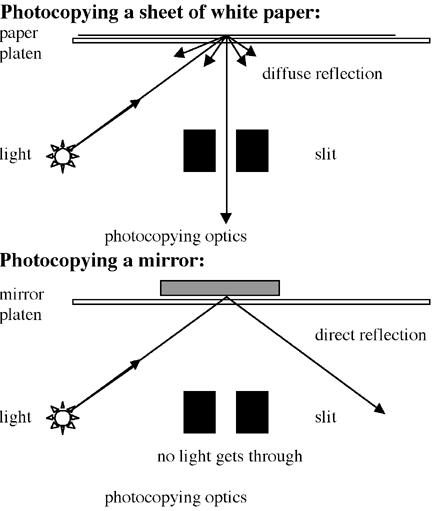
| MadSci Network: Engineering |
The following two sites will give you some information about the xerographic process that is used in most modern photocopying:
But the answer to your question comes in the very first part of getting the exposure, before any of the complicated photocopying stuff. The photocopier is designed to catch the diffuse reflected light from the sheet being photocopied, and to avoid the direct reflection.

There are good reasons for this. Any good photographer knows to avoid getting direct reflected light from a flash or you get funny and often unwanted effects. If a photocopier picked up directly reflected light, then it would be implossible to get a good image from a glossy original. Not only that, but possible reflections from the front and back surfaces of the platen would interfere with the image -- the platen would need to be made of very expensive non-reflective glass, and even that might not be good enough.
Try the links in the MadSci Library for more information on Engineering.